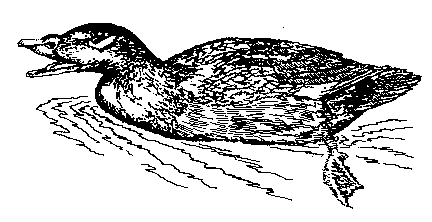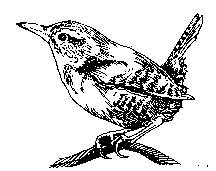|
| ||||||
Special | A | B | C | D | E | F | G | H | I | J | K | L | M | N | O
P | Q | R | S | T | U | V | W | X | Y | Z | ALL
W |
|---|
Whistling Swan:
Qukin}i{ - Olor columbianus Qukin}i{, sal}u{ aku{ huzuu quhmaza{. Agiichigaan At{a{ agnangis uku}azas. Qan'gim aslaan agach agiichigaan uku}azas. Sal}um uyugan aduu aku{, hiyukaa ama kitakix qaxchikdaa aza{. Iga{tal agudix qagmangis liidal iga{tazas, hagumatakus agiichigaan udaan ahmi}a axs agudix hanikuchas ilan taga{takus uku}azas. Sal}us akus qi}unazas, kalulgaa{ matalaka}is, kaznam kalulgala}aa{ta{ matakungis maalal kalulgaza}ulas. Ataqadim lalgal hawaax hiisa{talgahlikus hizax inasxaqas a{takus mal wayaam liisnalakan hagumatazakus. Udaahadan saahmIa}iza}ulas, chugaanul aqadagudix chugum hadan agacha saahmla}izas. Tan}is asxuunulax chi}il}im ilan isxa}ikus, siching asxuunulax chaang saahmla{tazas.
Whistling Swan - Olor columbianus The swan is a large white bird that is sometimes seen flying near Atka. The swans are seen mostly in winter time. The swan has a long neck and it has a black bill and black legs. They appear like the geese when they are in flight. When the swans migrate through Atka, they are seen in the small lakes. These large birds are protected by the government. They are not supposed to be shot, so they are not shot. At one time or other, they were hunted almost to extinction so today, they are few in number. The swans do not nest as far south as Atka. They go north to nest. They nest on islands or near swamp areas. They have four or five eggs each year. |
White-winged Scoter:
Tamgaalu{ - Metanitta deglandi Tamgaalu{ ala}um saa aku{, ala}um uhlii kugan aku{ uku}aza{. Tamgaalum ali}ingis hakangis huzuu qaxchikdakus, dagan imunagan hakangis quhmal, igasigan agalan utmaa hakangis ila{tangis quhmazas. Hingamataku{ kitakix ama hiyukaa uluudam angalidigaa ama qaxchikda{ aza{. Hagumatakus tamgaalum ayagangis, kaaxadgim ayagagan angunaa liidazas, chumnugim qaxchikdaa angali{tazas. Tamgaalus, sam aIa}um qamdagan ilan aatungis azas. Sas malganangis ilagaan chlaqatuzas, hagumakus mal hakangis hitmilgangis amnizas. Qan'gim aslaan hasinal haang anas agudix, qanikinga masxal aguun liisnaqadazas. Chugum hadan al slunas agudix. Saaqudikinga masxal aguun udaa}aa}utazas. Sam kayutungis azas, kalulgal ala}um kugan itxisxaqas agudix, hamang ala}um ilan chla{s uku}aqadazas. Tamgaalus udang saahmla}iza}ulas, chugaanul taaman hamang ilan saahmIa}izamchix ilan saahmla}izas. Tamgaalu{ hatim siching aaka{. Saahmlam uluudam angalidigana{ liidangis mataza}.
White-winged Scoter - Melanitta deglandi The white-winged scoter is a saltwater duck. This duck likes to stay in deep water. The drake white-winged scoter is all black in color. It has white feathers around the eye region. It also has white feathers on the back middle part of its wings. Its feet and its bill are pink and black in color. The hen is similar to a harlequin hen, and it is brown in color. The white-winged scoter is a duck that prefers the deep water. It dives more often than other ducks. It is also very hard to pluck their feathers. During the winters, they are seen in great numbers around the village. When spring comes, their numbers decline. They spend their summers up in northern Alaska, and they return to Atka once again in the fall. They are strong ducks. When the are shot, they dive underwater not to be seen again. They do not nest around this area. They go north to their nesting ground to have their eggs there. They usually lay about nine to fourteen pinkish eggs. |
Winter Wren:
Qatxaya{ - Troglodytes troglodytes Qatxaya{, sakucha{ aku{ imudigana{ liidaza{. Hakaa chumnugim qaxchikdaa angali{taku{ ama dam qaxchikdaa ila{taa mataza{. Sakuchas udang malganangis ilagaan chuqudanaaguza{ aza{. Taga{tal aguun ataqam aslan alaka{, ataqan hiisa{tal samgamigina{ liidaza{. Hitxii iIa{taa hakang chuchagina{ liidaku{ uku}aza{. Qatxayas udang alanazana}uIas akuzaan, wayaam uku}al liisnaalazaqadakus.
Winter Wren - Troglodytes troglodytes The winter wren is a small bird that looks kind of round. The feathers on a wren are brownish in color. It has very dark black eyes. The wren is among the smallest of the birds seen around here on Atka. Whenever a wren is on the ground, it is continously moving. It seems as though it is always bobbing. The tail of a wren is always sticking straight up. There used to be lots of wrens around here, but they are hardly seen any more. |



 At{am Sangis
At{am Sangis